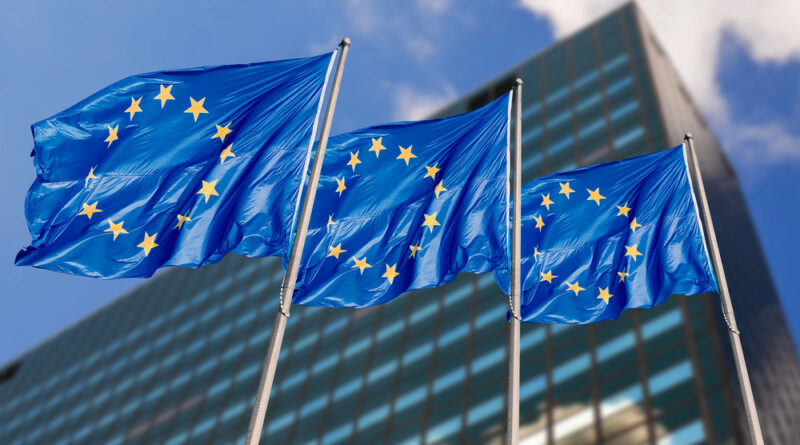DNS4EU: Europe’s New Home-Grown DNS Resolver Aims to Rewrite the Internet’s Phone Book
A Quiet Revolution at the Network Layer
Most people never see it, yet every click, stream and swipe relies on the Domain Name System (DNS) to translate familiar web addresses into numerical IP locations. For years, European households and public bodies have depended on DNS resolvers operated by US giants such as Google Public DNS and Cloudflare—services praised for speed but questioned for the data trails they leave behind. Now Brussels has stepped onto the playing field with DNS4EU, a pan-European resolver designed to keep traffic—and the intelligence that travels with it—inside the Union’s borders.
Digital Sovereignty Takes Centre Stage
Digital autonomy has been a buzz-phrase in EU policy circles since the bloc set its sights on reducing strategic reliance on foreign tech infrastructure. DNS4EU is the clearest manifestation of that ambition so far: a publicly funded, EU-supervised service that promises compliance with GDPR by default and routing that never strays beyond European data centres. Overseen by the EU cybersecurity agency ENISA and engineered by a consortium spanning ten Member States, the resolver is operated day to day by Czech security firm Whalebone with technical assistance from organisations including CZ.NIC and F-Secure.
Although Internet users can already choose alternative resolvers, many stick with whatever their Internet Service Provider (ISP) assigns automatically. DNS4EU’s architects want to change that behaviour in two ways: by persuading ISPs to adopt the resolver wholesale for their customer base, and by offering a free-to-use public option that anyone can switch to manually. If the roll-out reaches its targets, up to 100 million Europeans could be protected by the new system within the next few years.
How the Service Works
At its core, DNS4EU performs the same basic task as any other resolver—mapping domain names to IP addresses—but layers in three EU-specific capabilities:
| Capability | What It Does | Who Benefits |
|---|---|---|
| Regional Threat Intelligence | Shares real-time data on malware domains discovered anywhere in the EU so that other Member States can block them immediately | Citizens, SMEs, public agencies |
| Privacy-First Architecture | Removes or truncates user IP data as early as possible in the lookup process; logs are kept short-term and anonymised | GDPR compliance for all users |
| Customised Filtering Options | Lets households activate blocking for ads, adult material or both; enterprise and government tiers can fine-tune policies for staff networks | Parents, schools, public services |
Traffic is processed on European infrastructure alone, using Knot Resolver 6 deployed in Kubernetes clusters hosted by EU-based cloud provider Scaleway. Back-end redundancy is spread across multiple Member States so a local outage cannot cripple the whole network.
Optional Shields—or a Slippery Slope?
Security professionals have welcomed the prospect of malware and phishing domains being neutralised at DNS level, especially given the alarming growth of ransomware campaigns. The option to toggle additional filters for advertising and adult sites, however, has revived a long-running debate about where security ends and censorship begins.
Civil-liberties advocates note that DNS-level blocking—voluntary today—could slide toward mandatory frameworks tomorrow if governments decide they like the lever. They also highlight that DNS4EU’s logging policy, while more restrained than some commercial rivals, still records a minimal dataset that could theoretically be deanonymised in criminal investigations or intelligence probes. Brussels counters that any data capable of identifying an individual is stripped out before storage and that no EU institution has a console for live monitoring. Critics remain unconvinced, citing past instances where new surveillance powers expanded gradually after their introduction.
A Bigger Risk: Fragmentation of the Global DNS
There is another, more strategic worry. By carving out a resolver that exists chiefly for one geopolitical region, the EU risks encouraging other jurisdictions to erect their own DNS “walled gardens.” Technologists warn that a patchwork of national resolvers—each with its own blacklists and performance quirks—could erode the universality that has always defined the Internet. Kazakhstan and Mauritius have already flirted with mandatory national DNS gateways; analysts fear that a formal EU resolver, even if voluntary, could provide diplomatic cover for more heavy-handed regimes to follow suit.
What Users Need to Do (or Not Do)
For the ordinary European consumer, nothing changes overnight. ISPs are not compelled to adopt DNS4EU, and home users must still point their router or device at the service manually if they want it today. Government ministries and telecom operators are expected to move first, using specialised deployments that fold DNS4EU into existing security stacks.
Early tests suggest that lookup speeds are competitive with Cloudflare’s 1.1.1.1 service, thanks to edge nodes strategically scattered across the continent. The optional ad blocker has also proved popular in pilot roll-outs, effectively acting as a network-wide content shield that works on every device, even smart TVs that cannot run browser extensions.
The Road Ahead
The DNS4EU project timeline stretches well beyond its public launch. Future milestones include deeper integration with national Computer Emergency Response Teams, richer analytics for participating ISPs and a certification scheme for hardware vendors that pre-load the resolver into home routers. Consortium members are also exploring privacy-preserving DNS-over-HTTPS (DoH) and DNS-over-QUIC transport layers to make snooping by third parties even harder.
Whether DNS4EU becomes a widely adopted standard or remains a niche alternative will depend on three factors: trust, performance and perceived independence from political interference. Europe’s policymakers believe they can deliver all three. Skeptics will be watching closely for the first signs of mission creep.
For now, the EU has placed a significant stake in the ground. In an era when network infrastructure increasingly mirrors geopolitical fault lines, DNS4EU signals that the continent intends to control at least one of the foundational layers of its digital life—and to do so on its own terms.
Photo Credit: DepositPhotos.com

